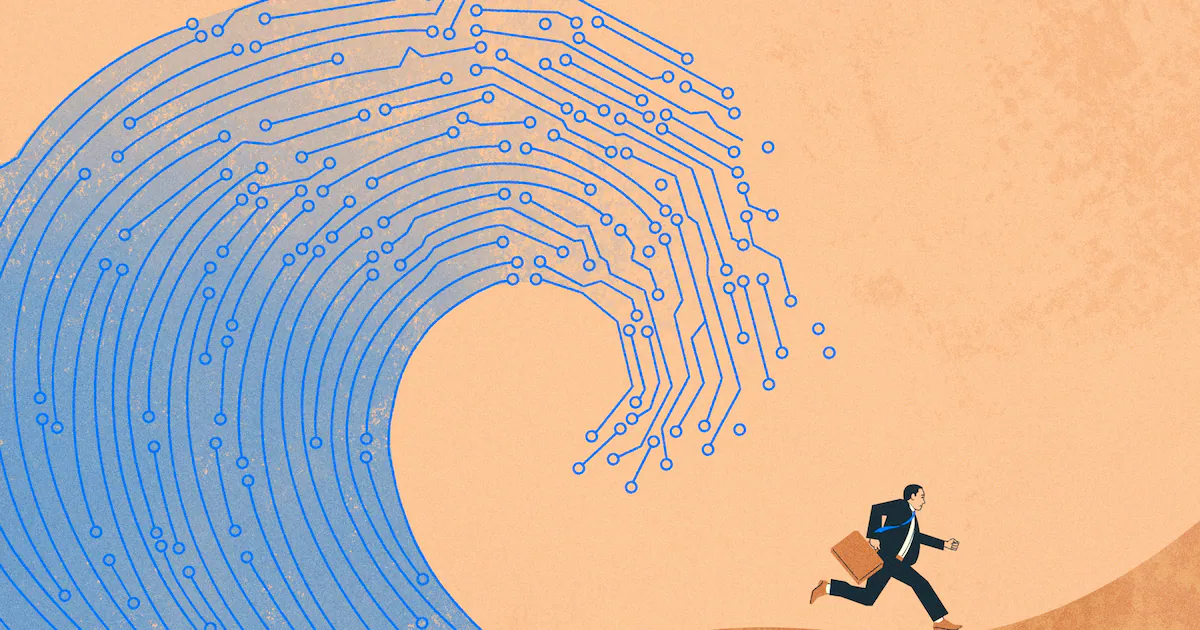Copyright Salt Lake City Deseret News

Has ChatGPT irreversibly altered the American economy? A graph deemed “The Scariest Chart in the World” by journalist Derek Thompson shows job openings falling and the stock market taking off in the wake of the rise of artificial intelligence. The graph has garnered the attention of many, including those who believe the story has more to do with current Trump administration policies and federal reserve regulations than with AI stealing jobs. Either way, the story the graph tells is more complicated than it first appears. For the past two decades, job openings and the S&P 500 moved in tandem. However, beginning at the end of 2022, the two lines significantly diverged. Graphs tracking this divergence, circulating in finance circles on Facebook, LinkedIn and X, claimed ChatGPT’s release on Nov. 30, 2022, was the catalyst. The stock market has risen 80% since ChatGPT was publicly released in November 2022, and job openings are down about 33% in the same time period, according to Federal Reserve Economic Data. Steven Kamin, a senior fellow at the American Enterprise Institute and former principal adviser for the Federal Reserve, told the Deseret News it’s “not illogical” to draw the conclusion that this divergence was spurred by the release of artificial intelligence. But, he added, not all economists are sure that it is. “And the latter view would be premised on the idea that the dissemination of AI just hasn’t gone far enough to lead to substantive job impacts,” he said. The available data show the sectors of the economy with a slowdown in job openings aren’t likely to be replaced by artificial intelligence. “Mining and lodging” and “durable goods manufacturing” showed a roughly 50% decline in openings between November 2022, and August of this year, according to an economist at Employ America. Sam Rahman, a portfolio manager at Hedge Asset Management, also told the Deseret News he was skeptical that ChatGPT is the reason for the split. “They’re very different data sets, and I don’t think it’s as linked as the chart shows,” Rahman said. A decline in job openings does not equal lost jobs According to Federal Reserve Economic Data, job openings dipped and unemployment skyrocketed when COVID-19 prompted nationwide shutdowns. In 2020, job openings returned to pre-pandemic levels within just a couple months, but in the latter half of the year, they rose 70%. Though on a soft decline since the spring of 2022, there are still more job openings now than at one time in the previous two decades. But as openings continue to drop, job-seekers feel like the market is much more competitive than it was just a couple years ago. “The labor market is kind of in stasis, although we don’t really know what’s happened in the last couple of months because of the shutdown,” Kamin said. “An alternative explanation for the fall in hiring is just the economy slowing in a context where businesses already had all the employees they needed.” At the same time, the stock market has grown by leaps and bounds, and most of the growth has been concentrated in AI and tech companies. Kamin explained that the increase in the stock market doesn’t reflect increased profitability as firms use AI to lay people off; it “more reflects hope in the future, that AI will make firms so enormously productive that their values will go up a lot.” How is policy impacting job openings? Tariffs, high interest rates and strict immigration policies are also likely factors in job openings on the decline. On “Liberation Day” in April (the day the Trump administration enforced reciprocal tariffs), the stock market plunged. With subsequent tariff announcements, the stock market has responded much less dramatically. However, on the business side, Rahman told the Deseret News, unpredictable tariffs have made it difficult to anticipate costs and revenue, which has made them hesitant to hire new employees. “What I’ve been seeing in both large and small companies, is that they’re not necessarily cutting workforce, because they need the labor, but they’re not adding new workers because because of this uncertainty as to how exactly tariffs impact their business,” Rahman said. Rahman believes artificial intelligence is having a similar effect on hiring. Employers are evaluating where they actually need human labor and where AI could fill in the gaps. “I think they’re still trying to figure that out, which is why you’ve seen this pause or slowdown in hiring in the economy,” he said. As for other policies and regulations, high interest rates disincentivize businesses to invest, giving them fewer resources to hire, and stricter immigration laws can prevent job openings from being created by choking off the labor supply, he said. What can we learn about the AI revolution from the dot-com boom? The internet was created in the 1960s, but the World Wide Web was not invented until 1989 — and it wasn’t made public until 1993. Jerod Wilkerson, a professor at Brigham Young University who specializes in software development, told the Deseret News the two phenomenons were extremely different in how they’ve been received by the public. The internet was “this major technology that was going to change the world, but nobody knew about it,” he said. In 1993, when the web was publicly released, Wilkerson was in an accounting master’s degree program, with an information systems emphasis. “It was not known that it was a big deal, to the point where none of my professors even mentioned it,” he said. Knowledge about the web “just kind of trickled out,” Wilkerson said. By 1998, he started changing his career to become a web developer. While some employees in niche industries (like floppy disk manufacturers) had to find other work, the general public wasn’t “worried about losing their jobs or anything like that,” Wilkerson said. Like a rising tide, “the web was creating jobs for them and creating lots of opportunity.” ChatGPT, on the other hand, “changed the world almost instantly.” AI is expected to hurt white collar workers In five days, ChatGPT went from zero to 1 million users, and in two months, it had 100 million monthly users. As of this past July, 700 million people used ChatGPT weekly, which is 10% of the world’s adult population, according to the National Bureau of Economic Research. By the end of 2025, OpenAI CEO Sam Altman hopes the service will reach 1 billion users. The dissemination of artificial intelligence has happened faster than any previous technology, and it is fundamentally changing the value of some goods. Previous technological advancements, including the internet and the web, have made education more and more valuable. “AI, at least in the short term, is doing the opposite of that.” Manual labor, construction, food services and other blue-collar work face no immediate threat of being replaced by artificial intelligence (unless Elon Musk gets his Tesla Bot loading the dishwasher correctly soon). “The web created jobs for programmers and everybody else. But now AI, at least in the short term, is taking jobs, especially from white-collar people,” Wilkerson told the Deseret News. As known especially well by educators, artificial intelligence is disincentivizing students from learning, since asking ChatGPT to work for them seemingly gives them better and quicker results. Will an AI winter swallow the tech industry? If businesses increasingly lean on artificial intelligence, Wilkerson and other tech experts foresee potential issues on the horizon. Currently, AI cannot adequately replace a senior-level engineer. But if tech companies stop hiring junior-level engineers and give their work to artificial intelligence, there will be no one with adequate experience from the company to step in once the senior engineers retire. Wilkerson explained that while he uses artificial intelligence in his own work, “I correct it all the time, and I can’t just turn it loose and let it go build everything.” He’s found he has to be extremely specific in telling it what to do and how to do it for the code to turn out OK. “Maybe eventually we’ll be able to, but we’re not there yet,” Wilkerson said, adding if it doesn’t advance enough in time, an AI winter could “create a significant problem” for the tech industry. Is AI already taking jobs? What do we do now? Nancy Fulda, a professor and artificial intelligence researcher at Brigham Young University, told the Deseret News some creative industries and work-for-hire coding have already seen disruption in hiring due to AI. “In the future, I expect labor displacement to continue happening, just as it has always happened in the past,” Fulda said. “Fifty to 100 years ago, human telephone operators routed phone calls, bank tellers and book-keepers manually recorded transactions in ledgers, and farm hands planted, irrigated and harvested crops by hand.” Each of the roles Fulda mentioned has been replaced by advancements in technology. “Importantly, none of these changes heralded an incoming apocalypse. Human workers shifted into new roles, often more desirable roles, and the U.S. economy continued to function,” she said. Fulda believes we will see the same pattern with the AI revolution. But there are things employers and educators can do to empower people to be more resilient to AI-induced change. “I would love to see more initiatives that prevent AI from being constructed or deployed in nonethical ways, and I would love to see more supports in place for people who are seeking to find their place in AI-disrupted work environments,” she said. “But I’m an optimist at heart,” Fulda continued. “I believe it will all work out.”



